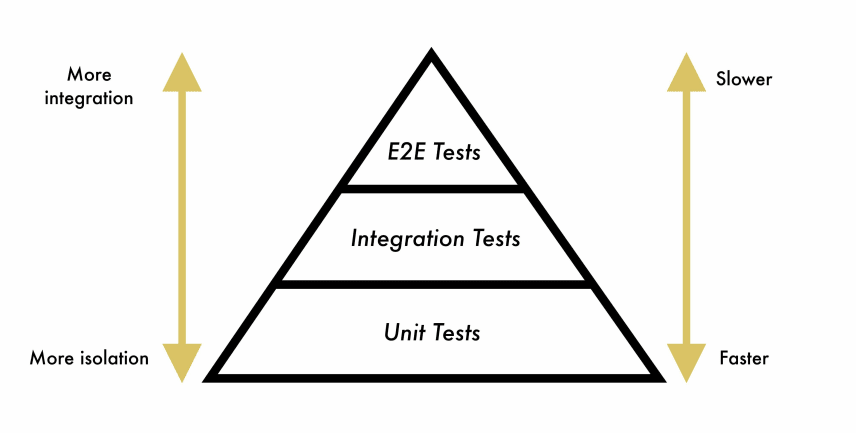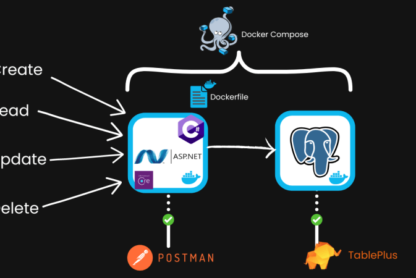As cloud workloads become increasingly complex, developers and architects need to carefully consider which orchestration approach to use in their AWS architecture.
Two popular approaches are Event-Driven Architecture and Workflows using AWS Step Functions. In this comprehensive comparison, we’ll take a closer look at both approaches and evaluate the trade-offs between them.
By the end of this article, you’ll have a better understanding of which approach fits your workload and be able to optimize your AWS architecture for maximum efficiency and performance.
Event-driven architecture (EDA) and Workflows, such as AWS Step Functions, are two popular approaches for building distributed applications in the cloud. While both approaches share similarities, they are fundamentally different in their design and use cases.
So, what is Event Driven Architecture (EDA)?
Event-driven architecture is a design pattern in which the system reacts to events that occur within the system or in the external environment. Events can be generated by user interactions, sensors, and other software components. Event-driven architectures are commonly used in IoT, real-time analytics, and microservices.
Why do we need Event Driven Architecture?
Event-driven architectures offer several advantages over traditional, monolithic architectures.
- Highly scalable — they can handle large volumes of events and distribute workloads across multiple services.
- Highly resilient — they can tolerate failures and continue to operate despite partial system failures.
- Highly decoupled — each service can operate independently and without knowledge of other services.
When to use Event Driven Architecture?
Event-driven architectures are best suited for applications that require real-time data processing, high throughput, and dynamic scaling.
They are well-suited for scenarios where events are generated by user interactions, IoT sensors, and other sources that require immediate response.
EDA is also an excellent choice for applications that require complex event processing, such as fraud detection, sentiment analysis, and predictive maintenance.
Before, we dive deeper — lets understand Workflows (AWS Step Function)
What is AWS Step Functions?
AWS Step Functions is a fully managed workflow service that enables you to coordinate distributed applications using visual workflows. With Step Functions, you can build and run workflows that integrate with AWS services such as Lambda, SNS, and SQS.
Workflows are defined using JSON-based Amazon States Language, which allows you to define the sequence of steps in your workflow.
Why do we need AWS Step Functions?
AWS Step Functions provides several benefits over traditional workflow engines.
- Fully managed — you do not need to worry about infrastructure management or scaling.
- Visual editor — makes it easy to design and debug your workflows.
- Seamless Integration with AWS Services — makes it easy to build complex workflows that span multiple services.
When to use AWS Step Functions?
AWS Step Functions is well-suited for applications that require complex workflows that involve multiple AWS services.
It is an excellent choice for building serverless applications that require coordination between multiple Lambda functions, SNS topics, and SQS queues.
It is also well-suited for applications that require long-running workflows, such as video processing or batch processing.
EDA is an example of a choreography-based architecture, where services collaborate by reacting to events. In contrast, AWS Step Functions is an example of an orchestration-based architecture, where a central orchestrator controls the flow of the application by coordinating services.
Maintenance cost and total cost of ownership (TCO) are important considerations when choosing between event-driven architecture (EDA) and AWS Step Functions. Here are some points to consider:
Maintenance Cost:
EDA services require more maintenance than AWS Step Functions since EDA services usually require more manual configuration, monitoring, and troubleshooting.
In EDA, services are often responsible for their own event processing and error handling, which can require more effort to maintain and troubleshoot.
In contrast, AWS Step Functions is fully managed, which means AWS takes care of infrastructure management, scaling, and updates. This reduces the maintenance burden on developers and operations teams.
Total Cost of Ownership (TCO):
The TCO for EDA and AWS Step Functions can vary depending on the specific use case and workload.
EDA services are generally more cost-effective for workloads with high volumes of events, as they can distribute workloads across multiple services and scale more efficiently.
AWS Step Functions is more cost-effective for workloads that require complex workflows with multiple AWS services, as it can reduce the overall number of services required and minimize the number of AWS API calls.
Overall, EDA and AWS Step Functions have different maintenance costs and TCOs depending on the specific use case and workload. Developers and operations teams should carefully evaluate the requirements and trade-offs of each approach before making a decision.
One thing to note is making changes to a complex workflow in AWS Step Functions can be challenging and require extensive testing. On the other hand, adding new functionality to an event-driven architecture can be less prone to regressions and may require less testing.
This is because AWS Step Functions are designed to control the flow of a complex workflow by coordinating multiple services. If the workflow changes, it can affect the behaviour of all the services that are involved in the workflow. This can make it difficult to predict the impact of a change and require extensive testing to ensure that the workflow still functions correctly.
In contrast, event-driven architectures are designed to react to events in a decoupled manner. Each service is responsible for handling its own events, and adding new functionality can often be done without affecting the behaviour of other services. This can make it easier to make changes and add new features without the risk of causing regressions.
However, the general trade-off between the two approaches is that AWS Step Functions can provide more control over complex workflows but require more effort to maintain, while event-driven architectures can be more flexible and easier to maintain but may require more design upfront to handle complex workflows.
Conclusion:
Choosing between Event Driven Architecture and AWS Step Functions can be challenging and depends on the specific use case and workload. To make the decision process easier, developers and architects can go through a checklist to evaluate the requirements and trade-offs of each approach.
Few factors that I can think of:
-
Workflow Complexity: If the workload requires a complex workflow with multiple AWS services, AWS Step Functions may be the better choice.
-
Event Volume: If the workload involves high volumes of events, Event-Driven Architecture may be more efficient and cost-effective.
-
Error Handling: If error handling and retries are critical to the workload, AWS Step Functions may provide more control and visibility.
-
Service Isolation: If it’s important to minimize the impact of changes or failures to individual services, Event-Driven Architecture may be more appropriate.
-
Maintenance Burden: If minimizing maintenance burden is a priority, AWS Step Functions fully managed infrastructure may be more desirable.
Ultimately, the decision should be based on the specific requirements and trade-offs of the workload. By going through this checklist and considering these factors, developers and architects can make a well-informed decision and choose the approach that best fits their needs.
If you found this post helpful, follow me for more upcoming content! And don’t forget to leave a comment with your feedback. Your input is important to me and will help me create even better
content in the future. Thank you for your support!




